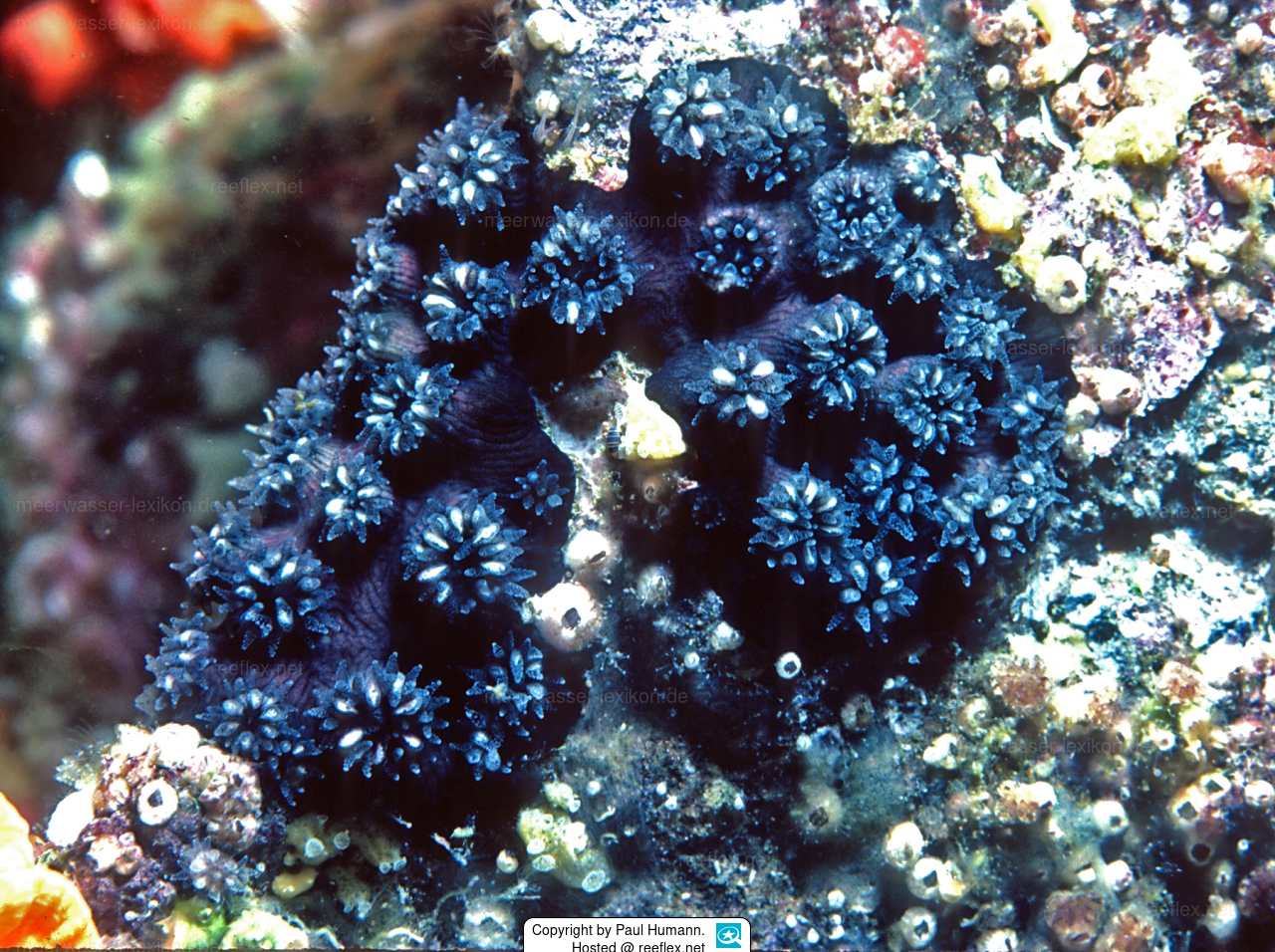Info
Wells, 1982
Very special thanks for the photo of the ultra rare coral Rhizopsammia wellingtoni to Paul Humann, http://fishid.com/, USA.
Paul has taken the photo at the Galagaos-Island and it seems to be the only exsiting photo.
Refering to the IUCN Red List of Threatened Species, the coral is critically endangered (possibly extinct)!!
Last records: 2000
Informations from IUCN:
Rhizopsammia wellingtoni occurs on under rock ledges, overhangs and ceilings of caves; at depths of 2 to 45 m (Wells 1983, Cairns 1991, Hickman 2005, P. Humann pers. comm. to C.P. Hickman).
Before the 1982-83 ENSO (El Niño) event, Glynn and Wellington (1983) reported R. wellingtoni was most abundant (approx. 13% of mean surface coverage) at 15 m depth at Tagus Cove, Isabela. After the 1982-83 El Niño event most R. wellingtoni colonies were destroyed, except for colonies at Cousins and Gordons Rocks (Hickman 2005). P. Humann (pers. comm. to C.P. Hickman) observed and photographed one colony at Cousins and another one at Gordons Rocks in 1993; and in the late 1990s he took a photograph at the Gordons Rocks' colony. Witman and Smith (2003) reported R. wellingtoni inside their permanent photo quadrats at Gordons Rocks in 1999 and in 2000. Since then, R. wellingtoni has not been observed at Gordons Rocks, Cousins or anywhere else, despite targeted searches.
Classification: Biota > Animalia (Kingdom) > Cnidaria (Phylum) > Anthozoa (Class) > Hexacorallia (Subclass) > Scleractinia (Order) > Dendrophylliidae (Family) > Rhizopsammia (Genus) > Rhizopsammia wellingtoni (Species)
Very special thanks for the photo of the ultra rare coral Rhizopsammia wellingtoni to Paul Humann, http://fishid.com/, USA.
Paul has taken the photo at the Galagaos-Island and it seems to be the only exsiting photo.
Refering to the IUCN Red List of Threatened Species, the coral is critically endangered (possibly extinct)!!
Last records: 2000
Informations from IUCN:
Rhizopsammia wellingtoni occurs on under rock ledges, overhangs and ceilings of caves; at depths of 2 to 45 m (Wells 1983, Cairns 1991, Hickman 2005, P. Humann pers. comm. to C.P. Hickman).
Before the 1982-83 ENSO (El Niño) event, Glynn and Wellington (1983) reported R. wellingtoni was most abundant (approx. 13% of mean surface coverage) at 15 m depth at Tagus Cove, Isabela. After the 1982-83 El Niño event most R. wellingtoni colonies were destroyed, except for colonies at Cousins and Gordons Rocks (Hickman 2005). P. Humann (pers. comm. to C.P. Hickman) observed and photographed one colony at Cousins and another one at Gordons Rocks in 1993; and in the late 1990s he took a photograph at the Gordons Rocks' colony. Witman and Smith (2003) reported R. wellingtoni inside their permanent photo quadrats at Gordons Rocks in 1999 and in 2000. Since then, R. wellingtoni has not been observed at Gordons Rocks, Cousins or anywhere else, despite targeted searches.
Classification: Biota > Animalia (Kingdom) > Cnidaria (Phylum) > Anthozoa (Class) > Hexacorallia (Subclass) > Scleractinia (Order) > Dendrophylliidae (Family) > Rhizopsammia (Genus) > Rhizopsammia wellingtoni (Species)







 Paul Humann, USA
Paul Humann, USA


